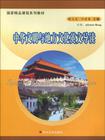中华文明与地方文化英文导读
1970-1
苏州大学出版社
Alistair Boag,顾卫星,叶建敏 著
315
大学英语应用类课程系列教材是苏州大学英语教师多年来教学研究成果的结晶。为了更有效地提高中国大学生英语应用能力,大学英语教师们坚持不懈地学习和研究国内外外语教学前沿理论和研究成果,深入探讨外语学习成功的诸多因素,多视角地展开实验性教学研究。广大教师通力合作,理论联系课堂教学实践,从大学英语教学目标、课程设置、教材使用一、教学方法、评估手段、教学对象、学习动机、学习策略等方面,广泛地展开了英语教学有效性的探索,并因此形成了本套系列教材。 随着我国基础英语教学水平的不断提高,大学阶段的英语教学应该更多地重视培养学生学以致用的意识,着重提高学生综合应用一英语的能力,引导学生通过口头、书面、计算机网络等途径学习和运用专业知识,获取和交流信息、开展和表达创新性思维,以便他们成为直接参与21世纪全球科学技术与、经济发展的优秀人才。 基于我们对大学英语教学总目标的新认识,并结合近年来广大教师课堂教学实践的成功经验,我们编写了《英语口语交际》、《大学英语写作与翻译:生成及其转换》、《跨文化交际与地球村民》、《中华文明与地方文化英文导读》、《英语影视欣赏》、《医学英语入门》、《大学英语综合能力训练》系列教材。
《中华文明与地方文化英文导读》为“国家精品课程系列教材”中的一本。书中所选的课文既体现语言的经典性,又不乏时效性;学生既可以学到充满诗情画意的美文,又可以体验反映现代气息和幽默的当代谚语。教材的编写博采众长,精心设计人际、人机途径的听、说、读、写、译语言运用练习,以求满足不同学生学习风格的需求;同时,任务型、项目型练习既注意锻炼学生的自主学习能力,又能促进学生合作学习能力的发展。
Part One Chinese CivilizatioChapter 1 General SurveyⅠ.GeographyⅡ.NationalityChapter 2 HistoryⅠ.Pre-Historical TimeⅡ.Early HistoryⅢ.Imperial EraⅣ.Modem PeriodChapter 3 LanguageⅠ.OriginⅡ.DevelopmentⅢ.CharacterⅣ.Four TreasuresChapter 4 CultureⅠ.Cultural RelicⅡ.Literary WorkⅢ.Performing ArtChapter 5 EducationⅠ.Ancient AchievementⅡ.Modem DevelopmentChapter 6 ScienceⅠ.Four Great InventionsⅡ.Traditional MedicineⅢ.World-Leading AchievementChapter 7 PhilosophyⅠ.ConfucianismⅡ.TaoismⅢ.BuddhismⅣ.Christianity and IslamChapter 8 ArchitectureⅠ.FeatureⅡ.TypeⅢ.CraftsmanshipChapter 9 Folk CultureⅠ.Lunar CalendarⅡ.Traditional HolidayⅢ.Ritual PracticeⅣ.CustomChapter 10 LifeⅠ.Dietetic CultureⅡ.CostumeⅢ.SportⅣ.EntertainmentPart Two Local CultureChapter 11 ProfileⅠ.Jiangsu ProvinceⅡ.Yangtze DeltaChapter 12 Gateway to SuzhouⅠ.Historical BriefingⅡ.AchievementⅢ.DevelopmentChapter 13 Suzhou Close UpⅠ.Suzhou, Venice in the OrientⅡ.Historical TownshipChapter 14 Featured ArchitectureⅠ.Temple and PagodaⅡ.Government Building and Guild-HallⅢ.Classical GardenChapter 15 Culture and LifeⅠ.Language and ArtⅡ.HandicraftⅢ.CuisineⅣ.FestivalⅤ.LifestyleReferences
2. Inscription Inscriptions were .carvings and pictures. Some inscriptions conveyedmeanings. For instance, on the inscription board of the Lisu nationality,a picture was recorded about three men meeting guests by presentingbig, medium and small blocks of earth as gifts respectively to the high-ranking, mediumranking, ahd low-ranking officials. Many inscribed symbols and some pictographs could be tracked inthe ashes of the Yangshao Culture excavated in Banpo, Xian ofShananxi Province. 38 tapes of inscriptions on the pottery shardsexcavated in Jiangsai, Shanxi Province were found to be similar to thecharacters Of oracle bone scripts, like"wood", or "mound". 3. Logograph Many experts on writing systems state that the oldest ethnic writingswere logographs. The hieroglyphs, applied by the Dongba record-keeper to record religious classics in the Naxi nationality, YunnanProvince, are extant logographs, Character symbols were found on thepottery shards of the Dawenkou Culture in Lingyang River, ShandongProvince. They were crude images of an ax, a knife, the sun, a fire,and a mountain. An ideograph was the original form of Paleography.Chinese characters originated from the logograph that was inventedearlier than the oracle bone scripts.
